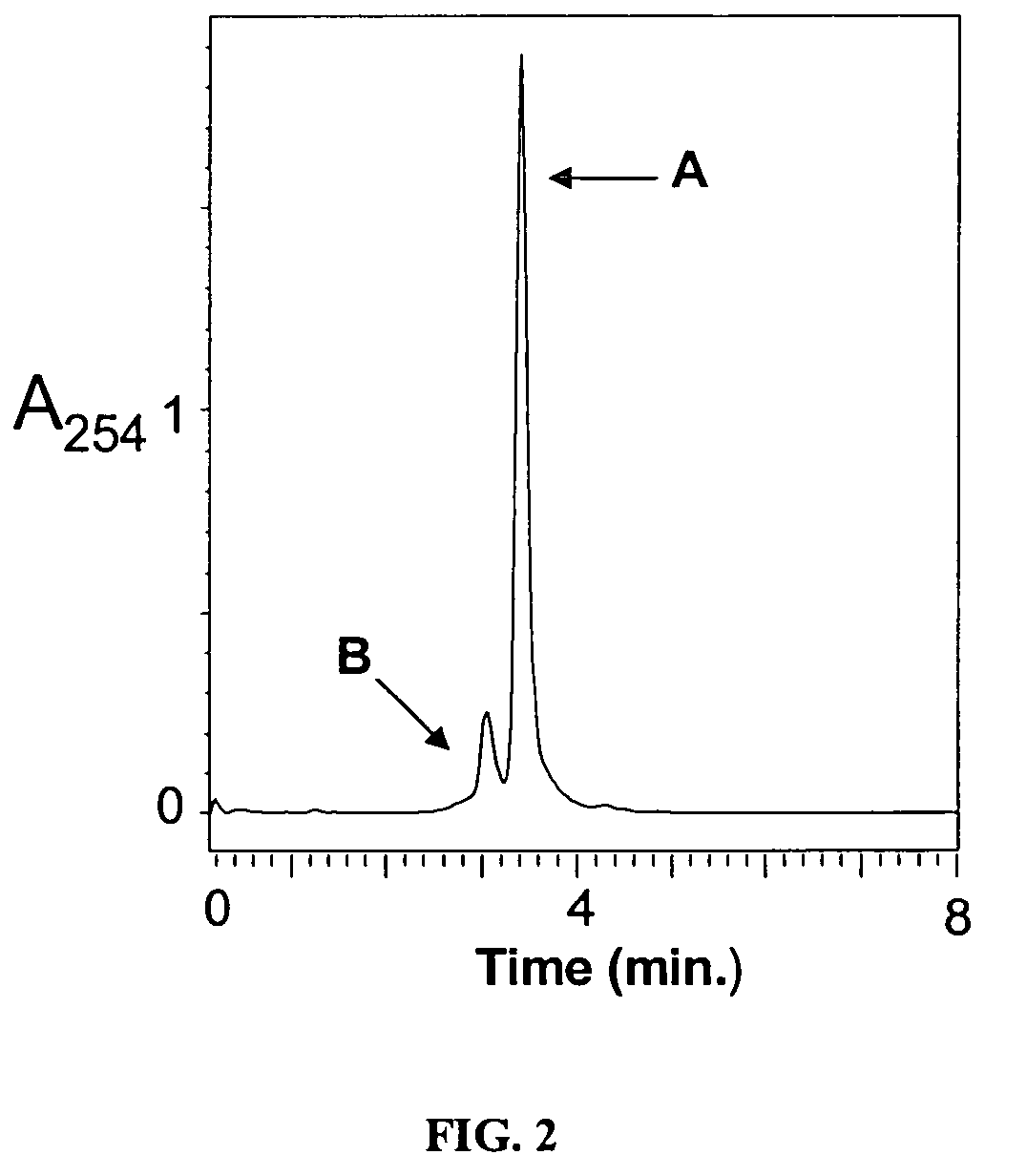Luminescent metal ion complexes
a technology of metal ions and complexes, applied in the field ofluminescent metal ions complexes, can solve the problems of high cost, hazardous use, and many fluorescent labels that suffer from a number of shortcomings, and achieve the effect of greater ease of isolation and detection and cost effectiveness
- Summary
- Abstract
- Description
- Claims
- Application Information
AI Technical Summary
Benefits of technology
Problems solved by technology
Method used
Image
Examples
example 1
[0323]Example 1 illustrates a method of making solid phase nucleic acid luminescent metal ion complexes.
example 1.1
Preparation of a Solution Phase Nucleic Acid Metal Ion Coordinating Component 6
[0324]A solution of 12 mL (20 g, 130 mmol) phosphorus oxychloride and 40 g (580 mmol) of 1,2,4 triazole in 400 mL of dry CH3CN was chilled on ice to 0° under argon. Triethylamine, 90 mL (90 g, 900 mmol) was added slowly dropwise with stirring over ½ hr. Next, 31 g (47 mmol) of 5′-(4,4′dimethoxytrityl)-3′-O-tertbutyldimethysilyl thymidine 4 was dissolved in 200 mL dry CH3CN and added slowly dropwise over ½ hr. The solution was stirred and allowed to warm to room temperature overnight. The solution was reduced to a gum under reduced pressure, and dissolved in 500 mL EtOAc. 300 mL saturated aqueous NaHCO3 was added and the mixture was shaken and separated. The organic phase was washed with another 300 mL portion of saturated aqueous NaHCO3 and then dried over MgSO4, filtered and evaporated to give the N4-triazolide as a brown foam. This material was dissolved in 150 mL of CH3CN and added dropwise with stirri...
example 1.2
Preparation of a Solid Phase Nucleic Acid Metal Ion Coordinating Component 7
[0328]A hemisuccinate was made by first drying 2 g of 6 by rotary evaporation of the compound with 50 mL dry pyridine. Next, 1 g of succinic anhydride was added along 50 mL of dry pyridine and 100 microliters of N-methylimidazole. The mixture was shaken by hand until all solids dissolved. After 2 days, TLC (same mobile phase as above) showed conversion to a lower rf compound, (rf 0.15) The mixture was treated with 5 mL of MeOH and stripped to a tar. The crude mixture was re-dissolved in 200 mL of DCM and washed 3 times with 0.5 N KH2PO4. The organic phase was dried over MgSO4 and evaporated to a tar which was used to functionalize the controlled pore glass (CPG).
[0329]A solution of 1 g of the resulting hemisuccinate in 50 mL of DMF was treated with 500 mg of BOP and 300 microliters of NMM. After 5 min, the solution was poured into a 250 mL erlenmeyer flask which contained 10 mL of 500 an aminopropyl CPG. The...
PUM
| Property | Measurement | Unit |
|---|---|---|
| Energy | aaaaa | aaaaa |
| Luminescence | aaaaa | aaaaa |
Abstract
Description
Claims
Application Information
 Login to View More
Login to View More - R&D
- Intellectual Property
- Life Sciences
- Materials
- Tech Scout
- Unparalleled Data Quality
- Higher Quality Content
- 60% Fewer Hallucinations
Browse by: Latest US Patents, China's latest patents, Technical Efficacy Thesaurus, Application Domain, Technology Topic, Popular Technical Reports.
© 2025 PatSnap. All rights reserved.Legal|Privacy policy|Modern Slavery Act Transparency Statement|Sitemap|About US| Contact US: help@patsnap.com



